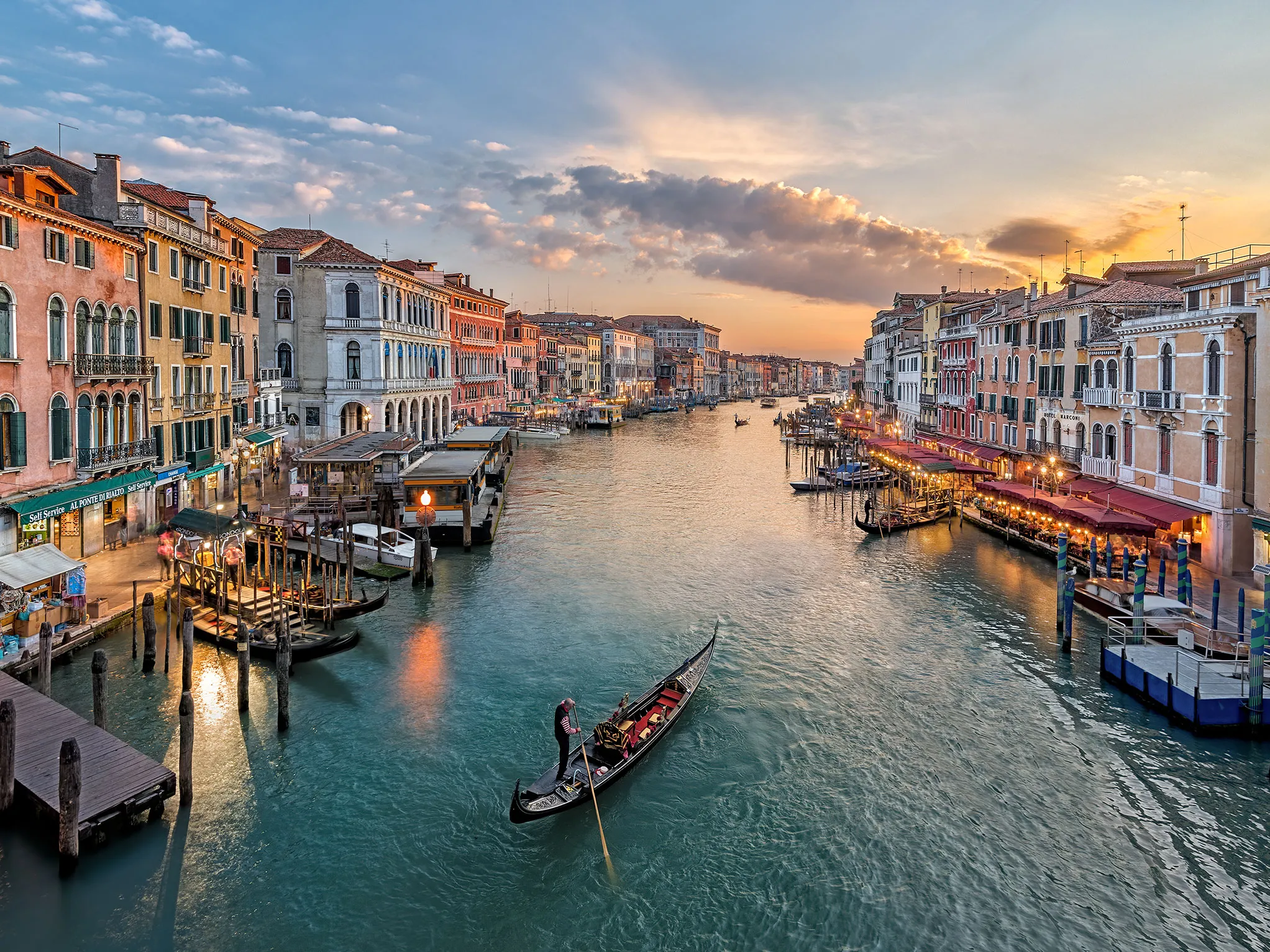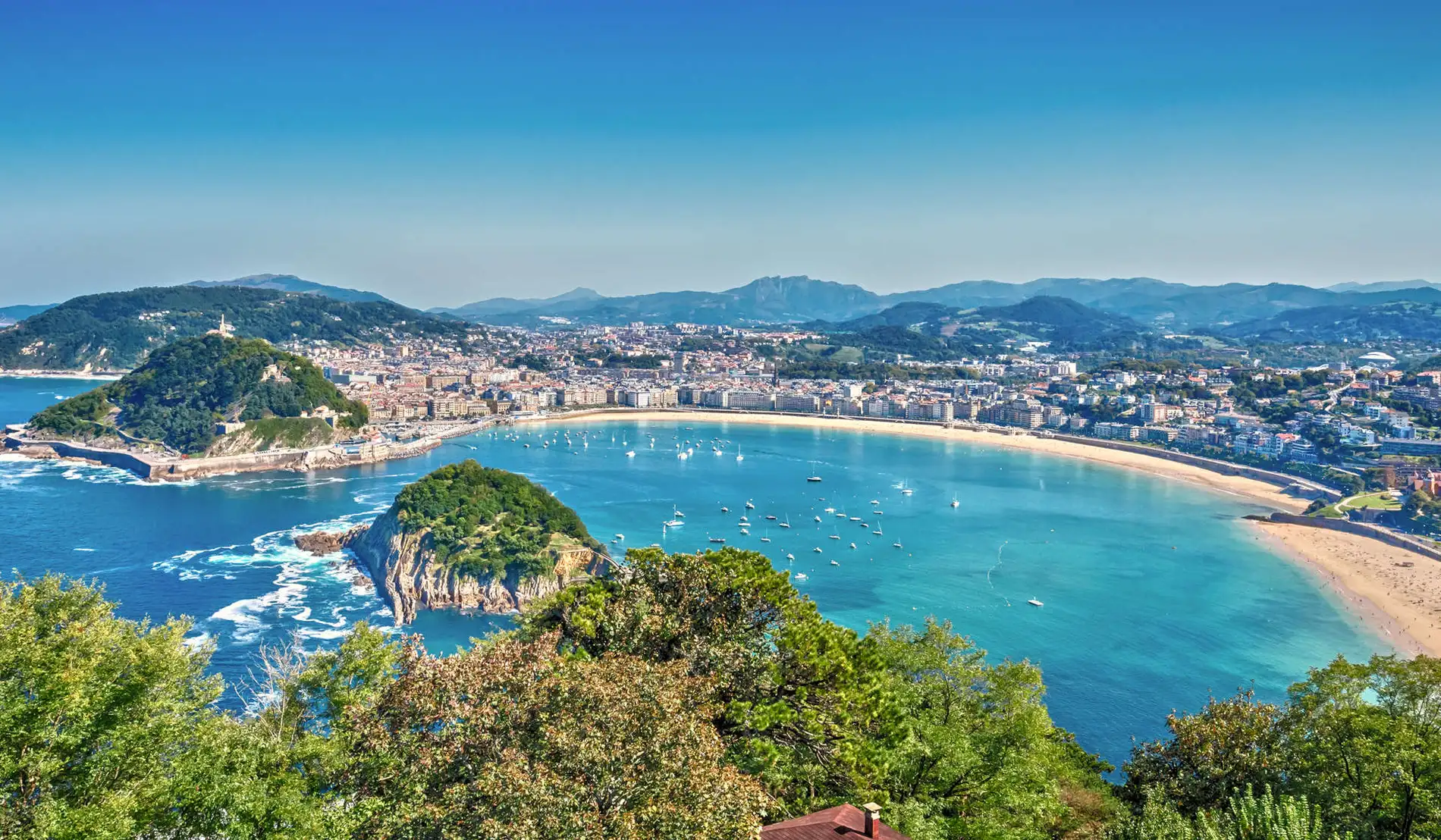Nestled in the heart of Zaragoza, Spain, the Aljafería Palace is evidence of the fascinating blend of architectural styles, historical significance, and cultural diversity that define Spain’s rich history. This awe-inspiring Palace, often called the “Jewel of Muslim Zaragoza,” has witnessed centuries of transformations, reflecting the diverse eras and civilizations that have shaped the Iberian Peninsula. Join us on a virtual journey as we explore the details and captivating history of the Aljafería Palace.
History of Aljafería Palace
The roots of Aljafería Palace trace back to Islamic rule in Spain, particularly during the era of the Taifa kingdoms. Constructed in the 11th century under the orders of Al-Muqtadir, the Banu Hud ruler of the Taifa of Zaragoza, the Palace originally served as a fortified residence. Its name, “Aljafería,” is derived from “al-Jafariya,” meaning the “house of Jafar,” likely a reference to the Banu Hud founder.
The Highlights of Aljafería Palace
As you step into the palace grounds, a courtyard adorned with a tranquil pool greets your sight. This open space is known as the Patio de Santa Isabel, around which the chambers of the expansive Taifa palace are arranged.
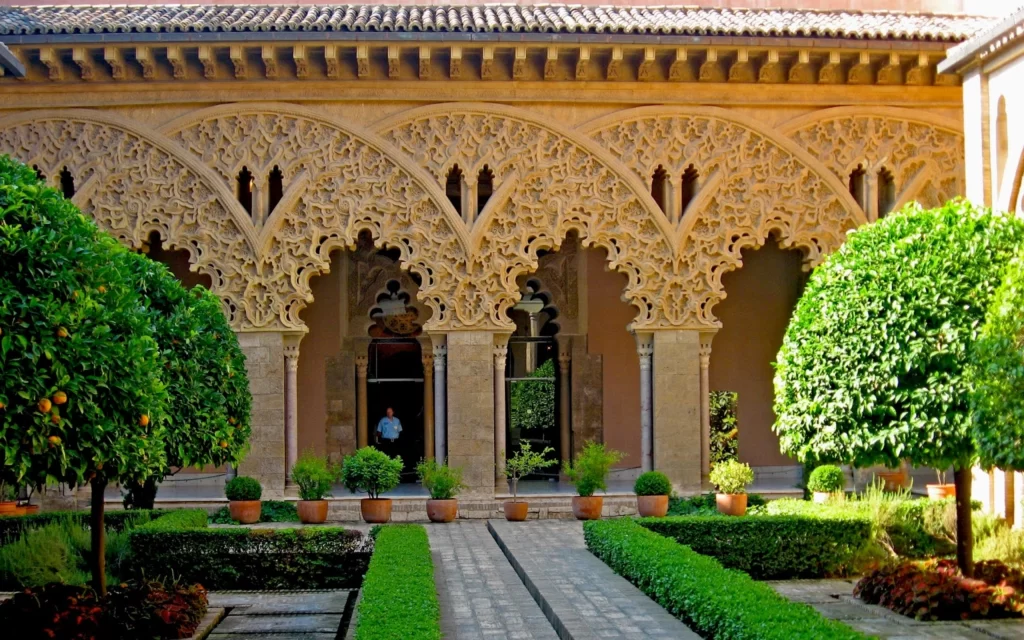
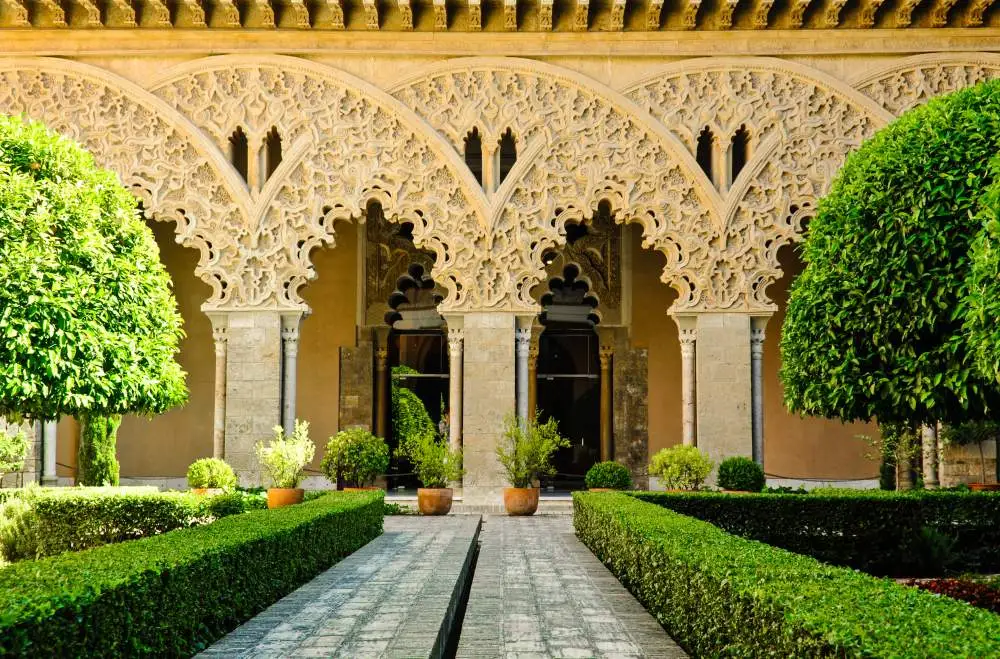
On the right side of your entrance, a grand porch with graceful arches, stately pillars, and an intricately designed wooden ceiling awaits.
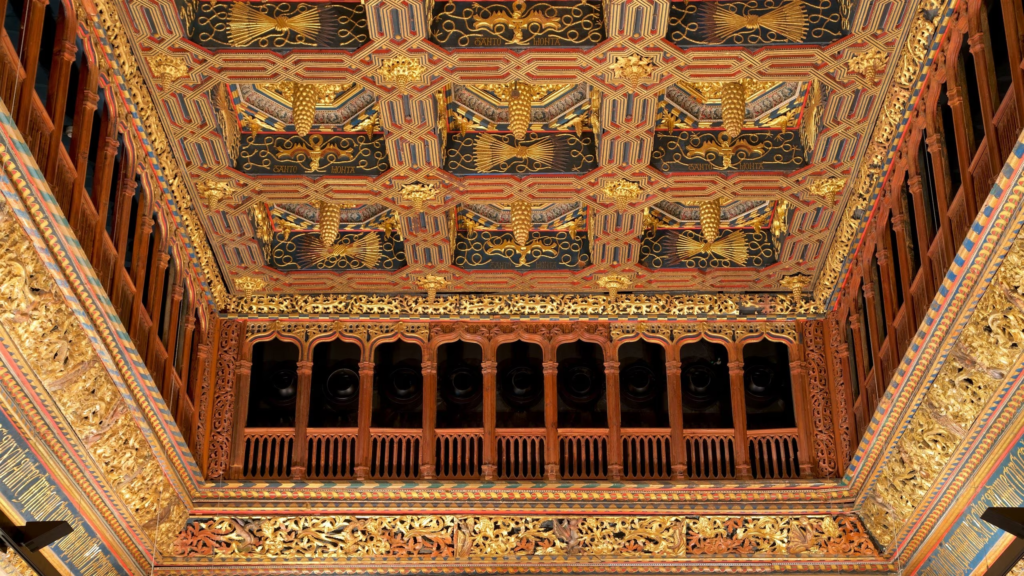
This distinguished area is referred to as the Golden Hall, serving as the principal chamber of the Palace. Within the Golden Hall, an exquisitely ornamented Mosque captures your attention. Towards the rear, a Mihrab—a niche in the mosque’s wall that indicates the direction towards Mecca—resides. Perhaps, it will evoke memories of the Mihrab found in Cordoba’s Mezquita. This particular part of the Palace radiates beauty and is the pinnacle of an Aljafería visit.
As you come up to the upper floors, you’ll notice substantial restoration efforts that have taken place. While most rooms might not captivate your interest, the ceilings present a spectacle. Crafted in the splendid Mudéjar style under the guidance of Peter IV during the 14th century, these ceilings narrate a story of artistic brilliance and historical significance.
Architectural Splendor
The architectural marvel of Aljaferia Zaragoza showcases a harmonious blend of Islamic, Gothic, Renaissance, and Mudéjar styles. Its exterior reflects the distinct aesthetics of Islamic architecture with intricate geometric patterns, horseshoe arches, and ornate tile work. The palatial complex is characterized by its fortified walls, towers, and lush gardens that evoke the spirit of the Al-Andalus era.
Mudéjar Art
The Mudéjar Art, a unique style developed by Muslim craftsmen working under Christian rulers, is particularly pronounced in Aljafería Palace.

This blend of Islamic and Christian influences is evident in the ornate stucco decorations, wooden ceilings, and decorative details that grace the interiors of the Palace. The Mudéjar influence also highlights the cultural exchange and coexistence that marked Spain’s history.
Christian Era Transformation
Following the Reconquista, the Palace underwent significant transformations during the Christian rule. King Ferdinand II of Aragon commissioned alterations to adapt the Palace to his courtly needs, incorporating Gothic and Renaissance elements. The Hall of the Ambassadors, with its stunning coffered wooden ceiling, is a prime example of this fusion of styles.
Rediscovery and Restoration
Throughout the centuries, Aljafería Palace underwent various uses and modifications. In the 20th century, efforts to restore the Palace to its former glory gained momentum. Today, the Palace is a UNESCO World Heritage site and houses the Aragonese Parliament. Its restoration not only preserves its architectural beauty but also serves as a testament to the value of historic preservation and cultural heritage.
Cultural Significance of Palacio de Aljafería
The Aljafería Palace is not just a masterpiece of architecture but a living embodiment of Spain’s complex history. It narrates the story of the interactions between different civilizations and religions, showcasing the layers of influence that have contributed to the nation’s identity. The Palace also hosts cultural events, exhibitions, and guided tours, immersing visitors in its captivating narrative.
Visiting Aljafería Palace
The optimal approach is to visit the website for ticket reservations, where you can select your preferred day and time. While the cost is 5 Euros, it’s important to note that this is a reservation fee. The actual payment will occur when you collect the tickets from the ticket office outside the Palace.
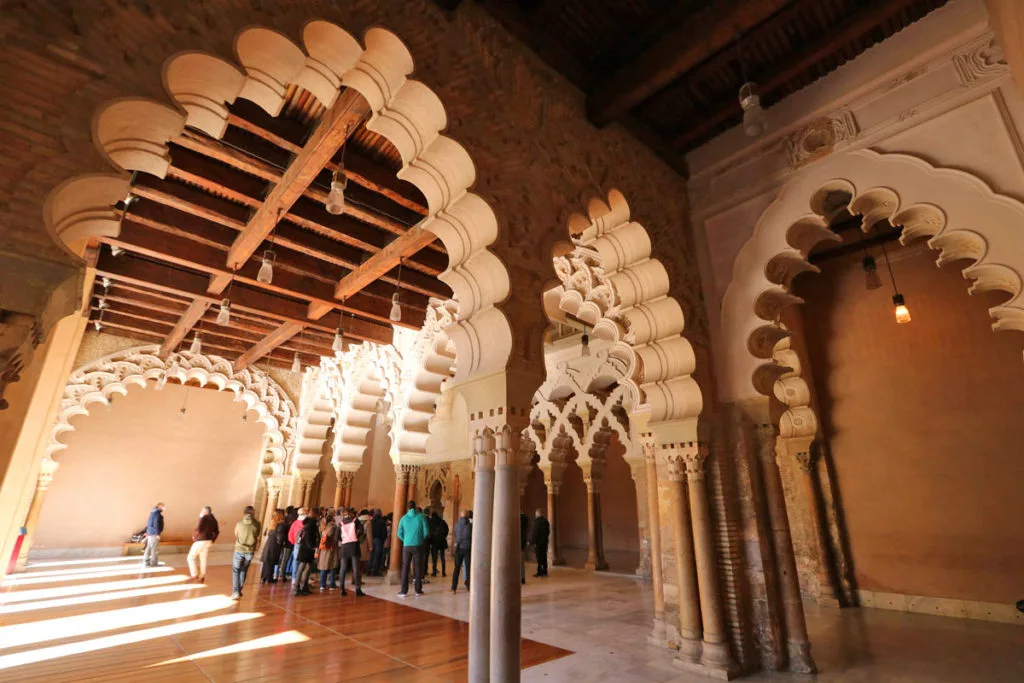
It is highly recommended to reserve your ticket in advance due to the limited capacity of 55 individuals per 15-minute interval.
Is it worth visiting Aljafería?
While the exterior might be striking, entering Aljafería doesn’t deliver the same grandeur as Alhambra or Real Alcazar. Still, it would be best if you considered including it in your list of things to do in Zaragoza. We believe the 5 Euro entrance fee is justified for the experience it offers.

Conclusion
The Aljafería Palace is a bridge between eras, cultures, and architectural styles. Its walls whisper tales of rulers, conquerors, artisans, and artists who have left an indelible mark on its stones. As we explore its chambers, we are reminded that history is a vibrant tapestry woven with the threads of diverse experiences. The Palace invites us to reflect on the significance of preserving our heritage and cherishing the lessons it imparts as we journey forward.


